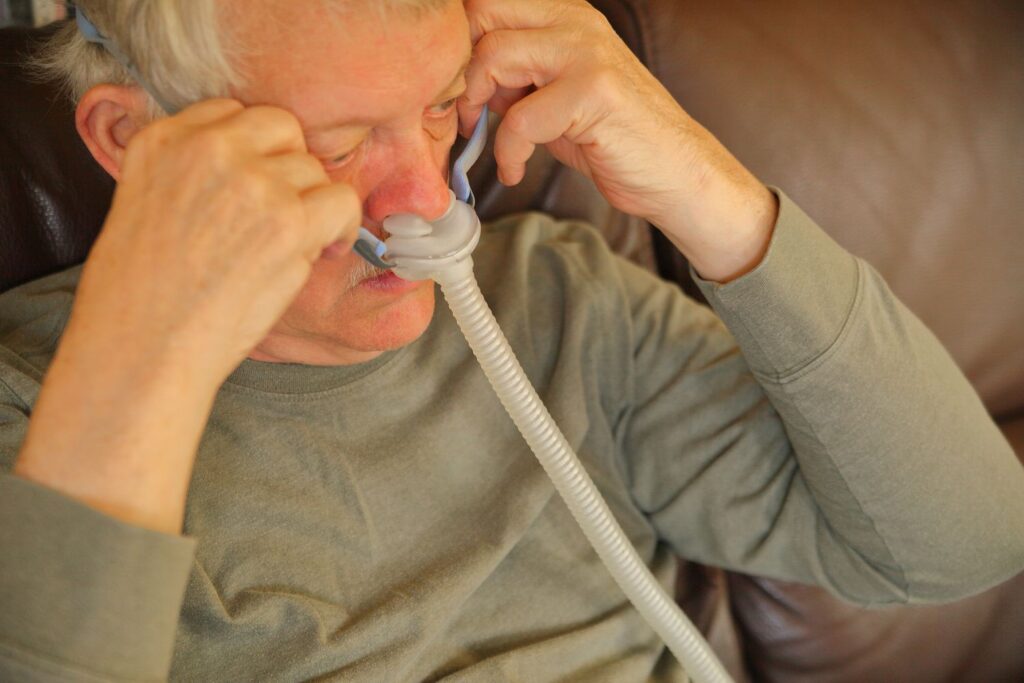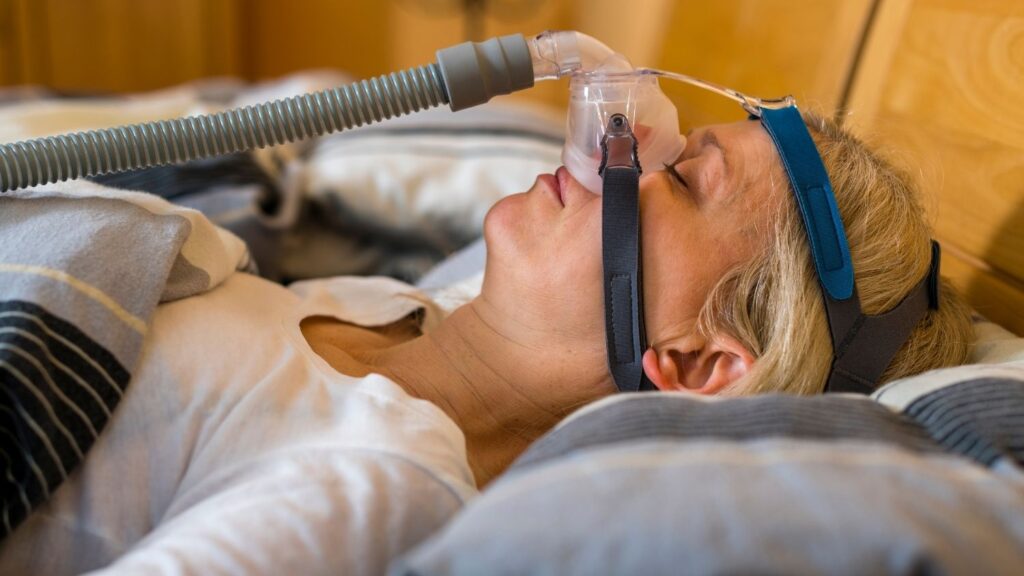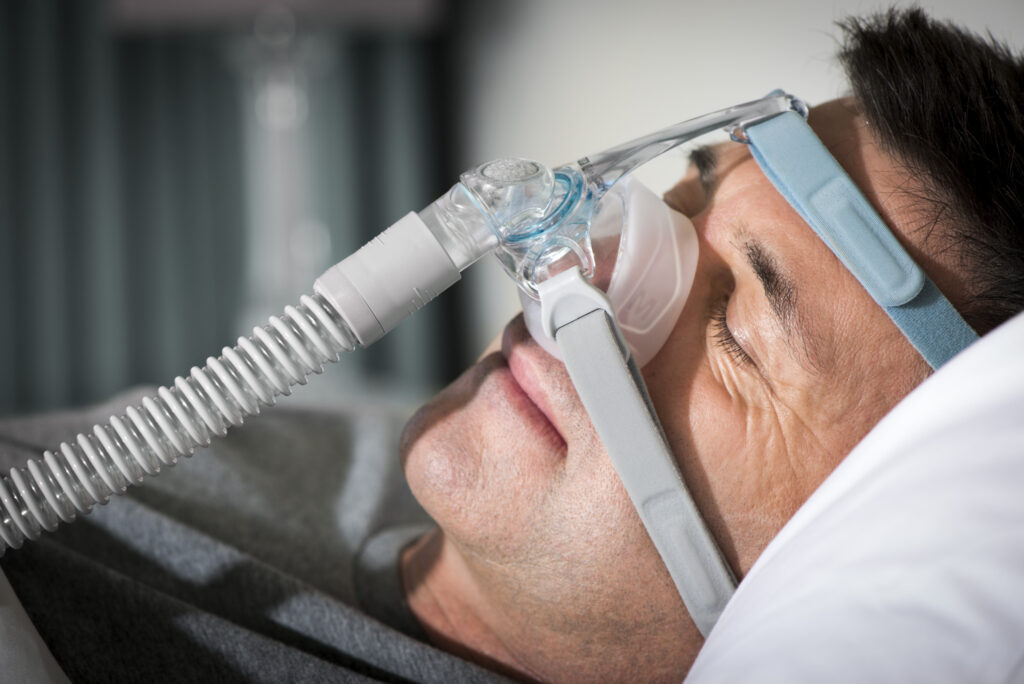If you use a CPAP machine to treat sleep apnea, you know how important it is to maximize comfort for a good night’s sleep. One common issue many CPAP users experience is mask irritation. This can include redness, soreness, and even pressure sores on the face. Fortunately, there are several tips you can follow to reduce CPAP mask irritation and enhance your overall comfort.
Understanding CPAP Mask Irritation
Before diving into the tips, it’s essential to understand the causes of CPAP mask irritation. There are several factors that can contribute to this issue, including:
- Poorly fitted masks: Buy cpap mask online that are too tight or too loose can create unnecessary pressure and friction on the face.
- Allergies or sensitivities: Some individuals may have allergic reactions to the materials used in certain masks.
- Excessive moisture: A lack of proper airflow or high humidity levels can cause excessive sweating and lead to skin irritation.

The Causes of CPAP Mask Irritation
Poorly fitted masks are a common cause of CPAP mask irritation. When your mask is too tight, the straps can dig into your skin and leave painful marks. On the other hand, masks that are too loose can lead to leaks, which not only disrupt sleep but can also cause skin irritation due to the constant rubbing.
For some individuals, allergies or sensitivities to the materials used in CPAP masks can be the culprits behind the irritation. It’s important to pay attention to any adverse reactions and consult with your healthcare provider if you suspect an allergic response.
Excessive moisture can also contribute to mask irritation. If your mask is not properly vented, it may trap moisture, leading to sweating and discomfort. Additionally, high humidity levels in your sleep environment can worsen this issue. Ensuring proper airflow and using a CPAP machine with integrated humidification can help combat excessive moisture and reduce irritation. Visit https://emptynosesyndrome.org/how-to-properly-clean-and-maintain-your-cpap-mask to get how to properly clean and maintain your CPAP mask.
Another factor that can contribute to CPAP mask irritation is the presence of facial hair. Facial hair can interfere with the proper seal of the mask, causing leaks and discomfort. It’s important to keep facial hair trimmed or consider using a mask specifically designed for individuals with facial hair.
In some cases, the type of mask material can also play a role in irritation. Masks made of silicone or other hypoallergenic materials are generally less likely to cause skin reactions. However, everyone’s skin is different, and what works for one person may not work for another. It may require some trial and error to find the right mask material that suits your skin type.
The Impact of CPAP Mask Irritation on Sleep Quality
CPAP mask irritation not only affects comfort but can also have a significant impact on sleep quality. Discomfort and skin irritation can lead to frequent waking during the night, which disrupts your sleep cycle and leaves you feeling tired and groggy the next day.
Moreover, if the irritation becomes severe, it can discourage CPAP use altogether. Consistent usage is crucial for effective sleep apnea treatment, and any barriers to compliance, such as mask irritation, should be addressed promptly.
It’s important to remember that mask irritation is a common issue that many CPAP users face, and there are solutions available to alleviate the discomfort. By working closely with your healthcare provider and trying different strategies, you can find a solution that works best for you, ensuring a comfortable and restful night’s sleep.
Choosing the Right CPAP Mask
One of the key steps in reducing CPAP mask irritation is choosing the right mask. Here are some factors to consider when selecting a CPAP mask:
Factors to Consider When Selecting a CPAP Mask
When choosing a CPAP mask, it’s essential to consider factors such as:
- Mask fit: Ensure the mask fits securely but comfortably on your face, without excessive pressure or gaps.
- Mask type: There are various types of CPAP masks available, including nasal masks, nasal pillows, and full-face masks. Consider your breathing habits, comfort preferences, and any specific needs you may have.
- Materials: Pay attention to the materials used in the mask. If you have sensitivities or allergies, opt for masks made from hypoallergenic materials.
Different Types of CPAP Masks and Their Benefits
Depending on your sleep apnea needs and personal preferences, different types of CPAP masks may offer specific benefits:
- Nasal masks: These masks cover your nose and are ideal for individuals who breathe through their nose.
- Nasal pillows: These small cushions fit into your nostrils and are an excellent choice for individuals who prefer a minimalistic design.
- Full-face masks: As the name suggests, full-face masks cover both your nose and mouth, making them suitable for mouth breathers or individuals who experience congestion.
By carefully considering these factors, you can find a mask that provides a comfortable fit and minimizes the risk of irritation.
When it comes to mask fit, it’s crucial to find a balance between security and comfort. A mask that fits too tightly can cause discomfort and leave marks on your face, while a mask that is too loose may result in air leaks, reducing the effectiveness of your CPAP therapy. Take the time to try on different masks and adjust the straps to achieve an optimal fit.

In addition to mask fit, the type of mask you choose can greatly impact your overall CPAP experience. Nasal masks are a popular choice for many individuals as they cover the nose, allowing for a more natural breathing pattern. They are also less intrusive, making it easier to sleep in different positions. Nasal pillows, on the other hand, offer a minimalist design that fits directly into your nostrils. This type of mask is ideal for those who prefer a lightweight and less obstructive option.
For individuals who breathe through their mouth or experience congestion, full-face masks provide a comprehensive solution. These masks cover both the nose and mouth, ensuring that the air pressure from the CPAP machine is delivered effectively. Full-face masks are also beneficial for individuals who tend to breathe through their mouth during sleep, as they prevent air leaks and maintain a constant flow of pressurized air.
When it comes to materials, it’s important to consider any sensitivities or allergies you may have. Some masks are made from hypoallergenic materials, which can reduce the risk of skin irritation and allergic reactions. Additionally, masks with soft and breathable fabrics can enhance comfort and prevent excessive sweating during sleep.
Remember, finding the right CPAP mask may require some trial and error. It’s essential to consult with your healthcare provider or a CPAP specialist who can guide you in selecting the most suitable mask for your individual needs. By taking the time to choose the right CPAP mask, you can improve your comfort, adherence to therapy, and overall sleep quality.
Proper CPAP Mask Maintenance
Regularly cleaning and maintaining your CPAP mask is crucial in preventing irritation. Here are some tips to keep your mask in tip-top condition:
Cleaning Your CPAP Mask Regularly
You should clean your CPAP mask daily to remove any oil, skin cells, or other debris that can accumulate on it. Follow the manufacturer’s instructions for cleaning, but generally, you will want to use mild, fragrance-free soap and warm water. Rinse thoroughly and allow the mask to air dry. This routine will help keep your mask clean and minimize the risk of irritation.
When cleaning your CPAP mask, pay special attention to the areas that come into contact with your face, such as the cushion or nasal pillows. These areas can accumulate sweat, oils, and dead skin cells, which can lead to discomfort and skin irritation if not properly cleaned. Gently scrub these areas with a soft cloth or brush to ensure a thorough cleaning.
In addition to daily cleaning, it’s also important to perform a more thorough cleaning of your CPAP mask at least once a week. This involves disassembling the mask, removing any detachable parts, and soaking them in a solution of warm water and mild soap. Allow the parts to soak for a few minutes before rinsing them thoroughly and allowing them to air dry. This deep cleaning will help remove any stubborn buildup and ensure that your mask remains hygienic.
When and How to Replace Your CPAP Mask
Over time, the materials of your CPAP mask can deteriorate, leading to reduced effectiveness and increased irritation. It’s essential to replace your mask as recommended by the manufacturer or your healthcare provider. Signs it may be time for a replacement include visible wear and tear, persistent leaks, or changes in fit.
When considering a replacement, it’s important to choose a mask that suits your individual needs and preferences. There are various types of CPAP masks available, including nasal masks, full-face masks, and nasal pillows. Each type has its own advantages and disadvantages, so it’s worth discussing your options with your healthcare provider to find the best fit for you.
When trying on a new CPAP mask, pay attention to the fit and comfort. The mask should create a secure seal without causing any pressure points or discomfort. It’s also important to ensure that the mask is compatible with your CPAP machine and any additional accessories you may be using, such as a humidifier or heated tubing.
By replacing your mask regularly, you can ensure optimal comfort and minimize the risk of irritation. It’s also worth noting that some insurance providers may cover the cost of a new CPAP mask on a regular basis, so be sure to check with your provider to see if you’re eligible for a replacement.
Adjusting to Your CPAP Mask
Getting used to sleeping with a CPAP mask can take time and patience. Here are some tips to help you adjust:
Tips for the First-Time CPAP Users
If you’re a first-time CPAP user, wearing a mask while sleeping can feel strange at first. Try these tips to ease the adjustment process:
- Start slowly: Gradually increase the amount of time you wear your mask each night until you can comfortably tolerate it for the entire duration of sleep.
- Practice during the day: Wear your mask while watching TV or engaging in other relaxing activities to help get accustomed to the sensation.
- Seek support: Join online forums or support groups where you can connect with other CPAP users who have successfully adjusted to wearing a mask. They can provide valuable tips and encouragement.
Overcoming Common CPAP Usage Challenges
Various challenges can arise when using a CPAP mask. Here are some strategies to overcome them:
- Mask leaks: Adjust the mask straps to achieve a better seal. If leaks persist, consider trying a different mask type or size.
- Dryness or irritation: Ensure your CPAP machine has a built-in humidifier or consider using a standalone humidifier to add moisture to the air you breathe.
- Breathing difficulties: If you feel difficulty exhaling against the pressure, talk to your healthcare provider about adjusting the settings on your CPAP machine.
Additional Strategies to Minimize Irritation
Aside from the tips mentioned above, there are some additional strategies you can try to minimize CPAP mask irritation:
Using CPAP Mask Liners and Cushions
CPAP mask liners are soft pads or fabric inserts that you can place between your skin and the mask to reduce friction and pressure. These liners help cushion your face, minimize irritation, and improve overall comfort during sleep. Additionally, some masks include built-in cushions designed to alleviate pressure points and prevent skin irritation.
The Role of Humidifiers in Reducing Irritation
A humidifier is a valuable accessory for your CPAP machine. It adds moisture to the air you breathe, reducing dryness and irritation. Some CPAP machines have integrated humidifiers, while others require a separate device. Consult with your healthcare provider to determine if a humidifier is suitable for your needs and how to properly use it.
By following these tips and strategies, you can significantly reduce CPAP mask irritation and improve your overall comfort while using a CPAP machine. Remember, addressing any mask-related issues promptly can enhance compliance and support effective sleep apnea treatment. If you continue to experience persistent irritation, consult with your healthcare provider for further guidance.

